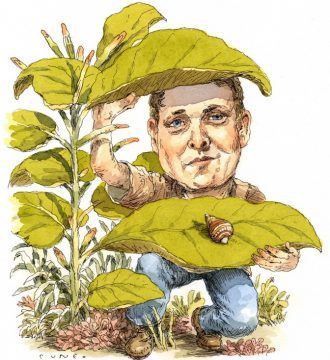Ed Yong in The Atlantic:
 When the last of a species disappears, it usually does so unnoticed, somewhere in the wild. Only later, when repeated searches come up empty, will researchers reluctantly acknowledge that the species must be extinct. But in rare cases like George’s, when people are caring for an animal’s last known representative, extinction—an often abstract concept—becomes painfully concrete. It happens on their watch, in real time. It leaves behind a body. When Sischo rang in the new year, Achatinella apexfulva existed. A day later, it did not. “It is happening right in front of our eyes,” he said.
When the last of a species disappears, it usually does so unnoticed, somewhere in the wild. Only later, when repeated searches come up empty, will researchers reluctantly acknowledge that the species must be extinct. But in rare cases like George’s, when people are caring for an animal’s last known representative, extinction—an often abstract concept—becomes painfully concrete. It happens on their watch, in real time. It leaves behind a body. When Sischo rang in the new year, Achatinella apexfulva existed. A day later, it did not. “It is happening right in front of our eyes,” he said.
Hawaii was once known for its snails, or kāhuli. Most are smaller than the average garden snail, and far more beautiful. Their shells swirl with the palette of a chocolate box—dark brown, chestnut, white, the occasional splash of mint. Sischo compares them not only to candy but also, because many live in trees, to Christmas ornaments. All of them descended from ancestral mollusks that arrived in Hawaii millions of years ago, perhaps on the bodies of birds. Those stowaways gave rise to more than 750 species—an incredible radiation that turned the snails into exemplars of evolution’s generative prowess.
But in recent decades, kāhuli have come to exemplify the opposite force: extinction.
More here.
